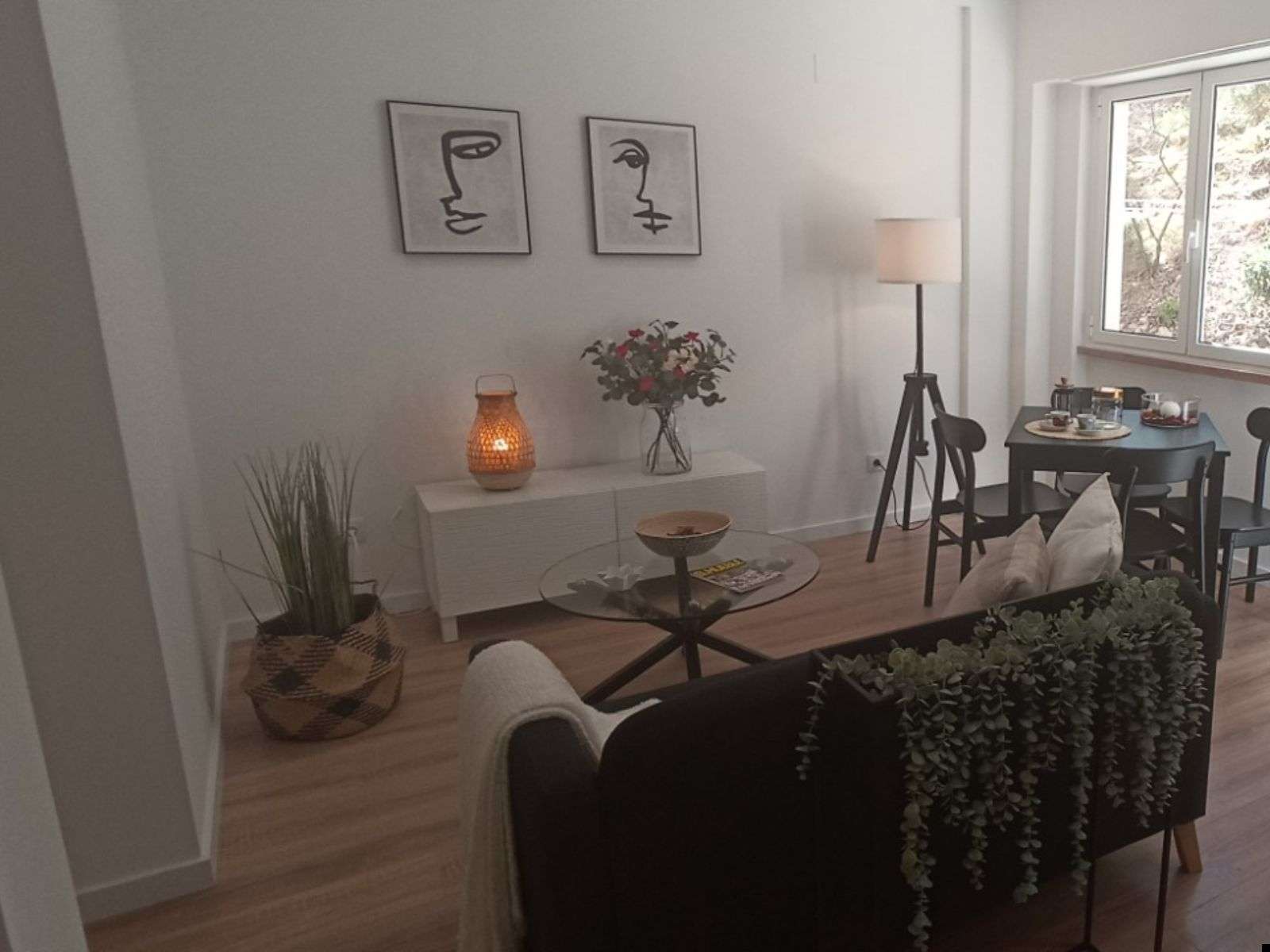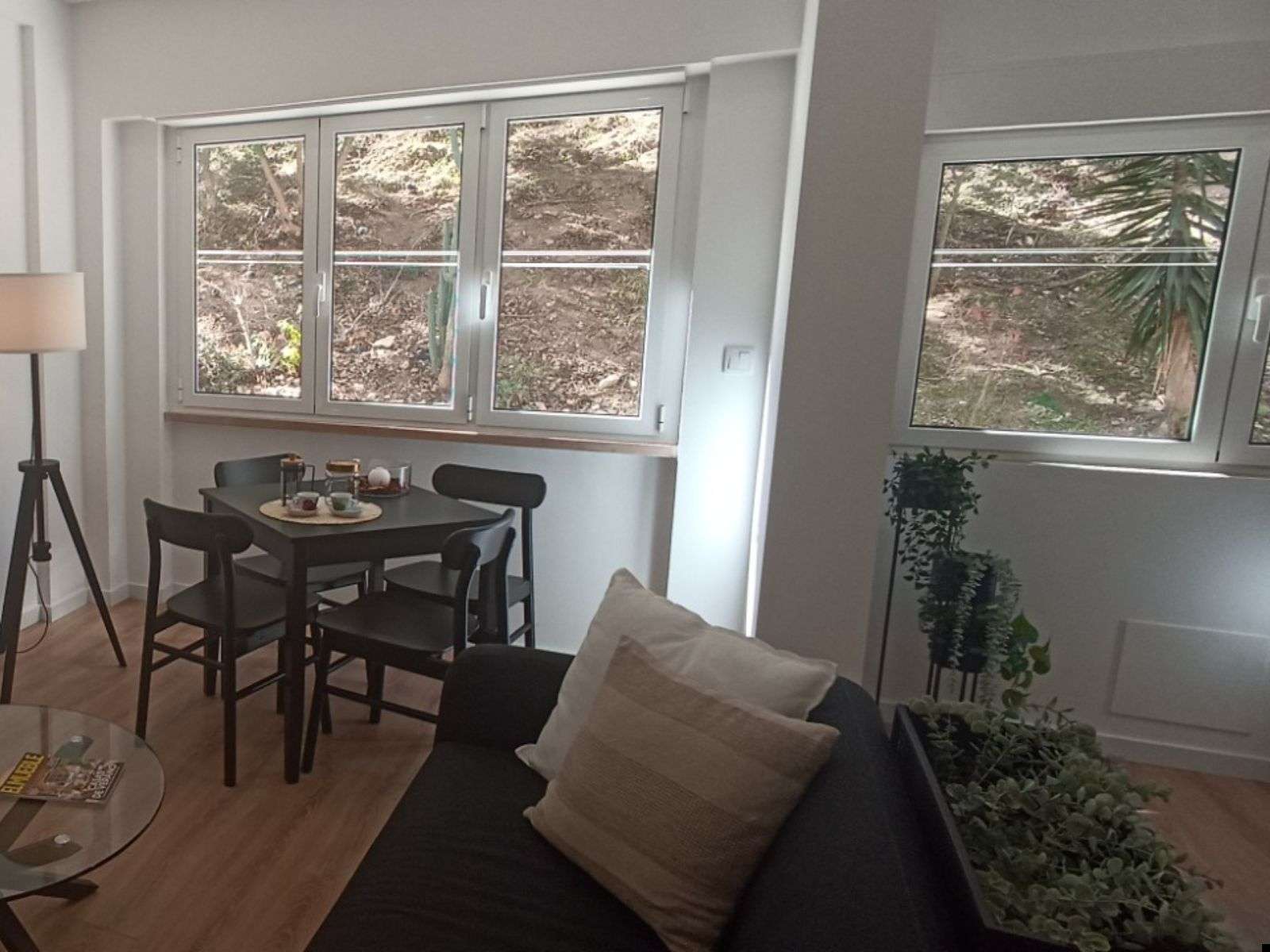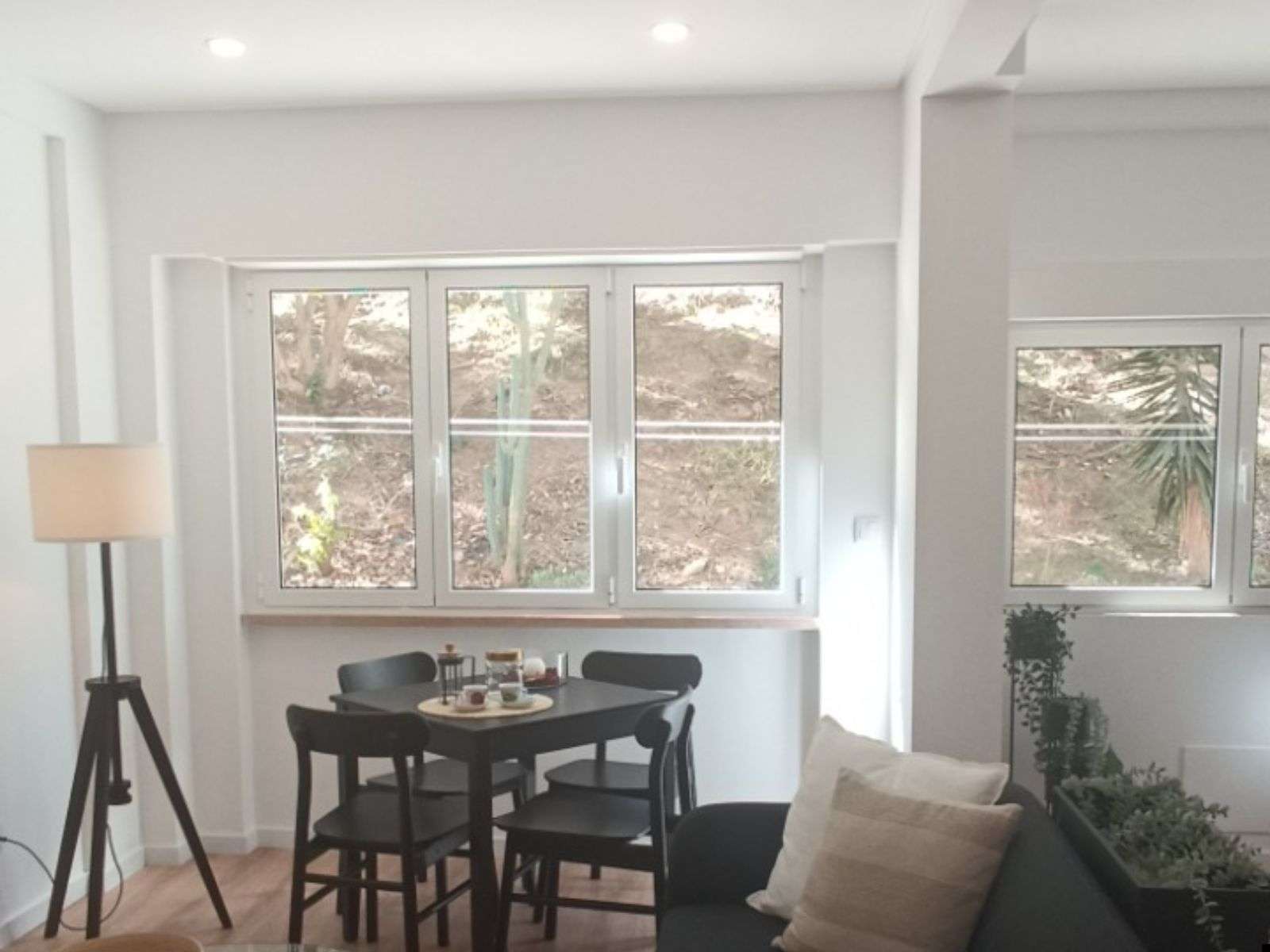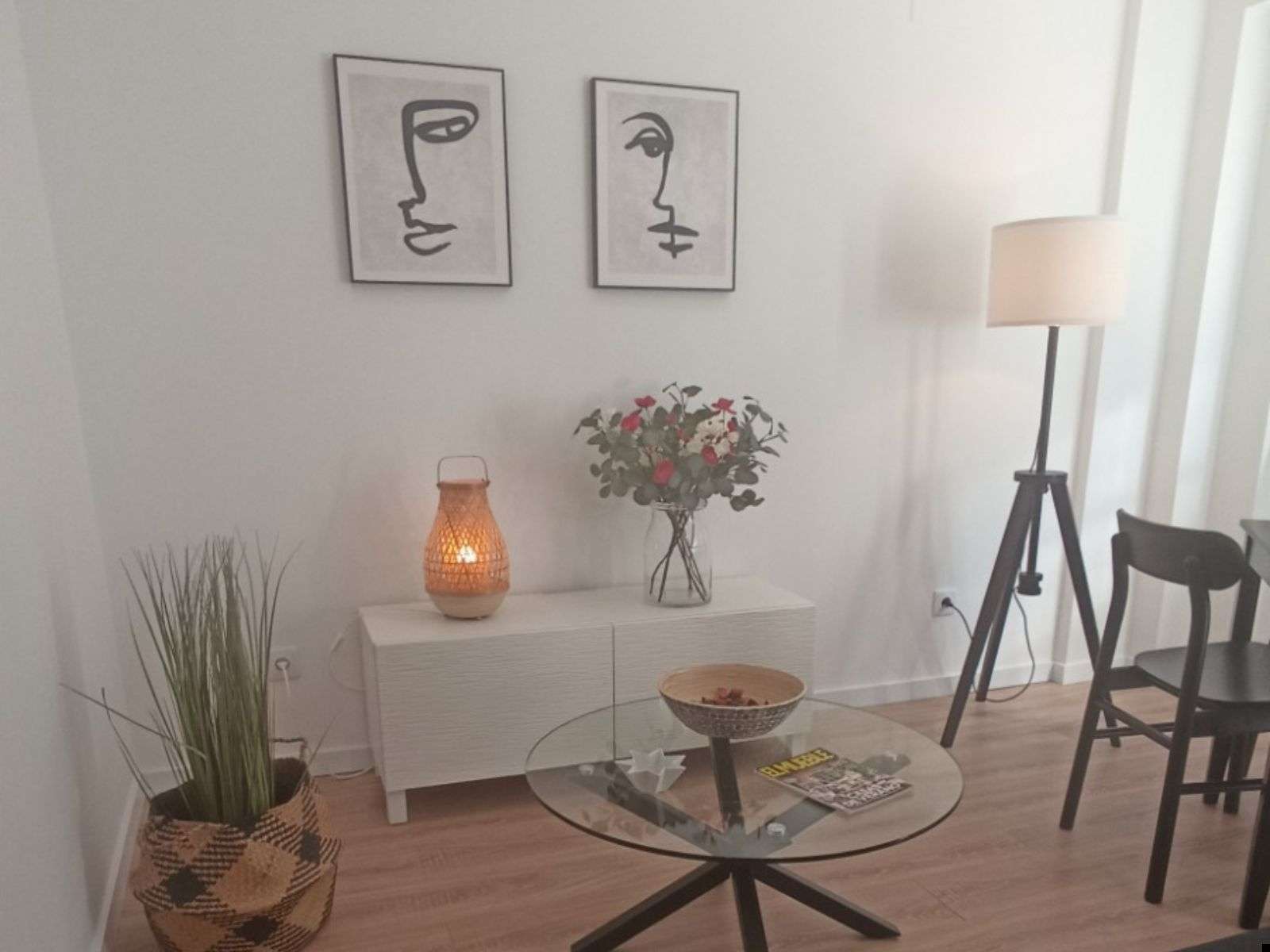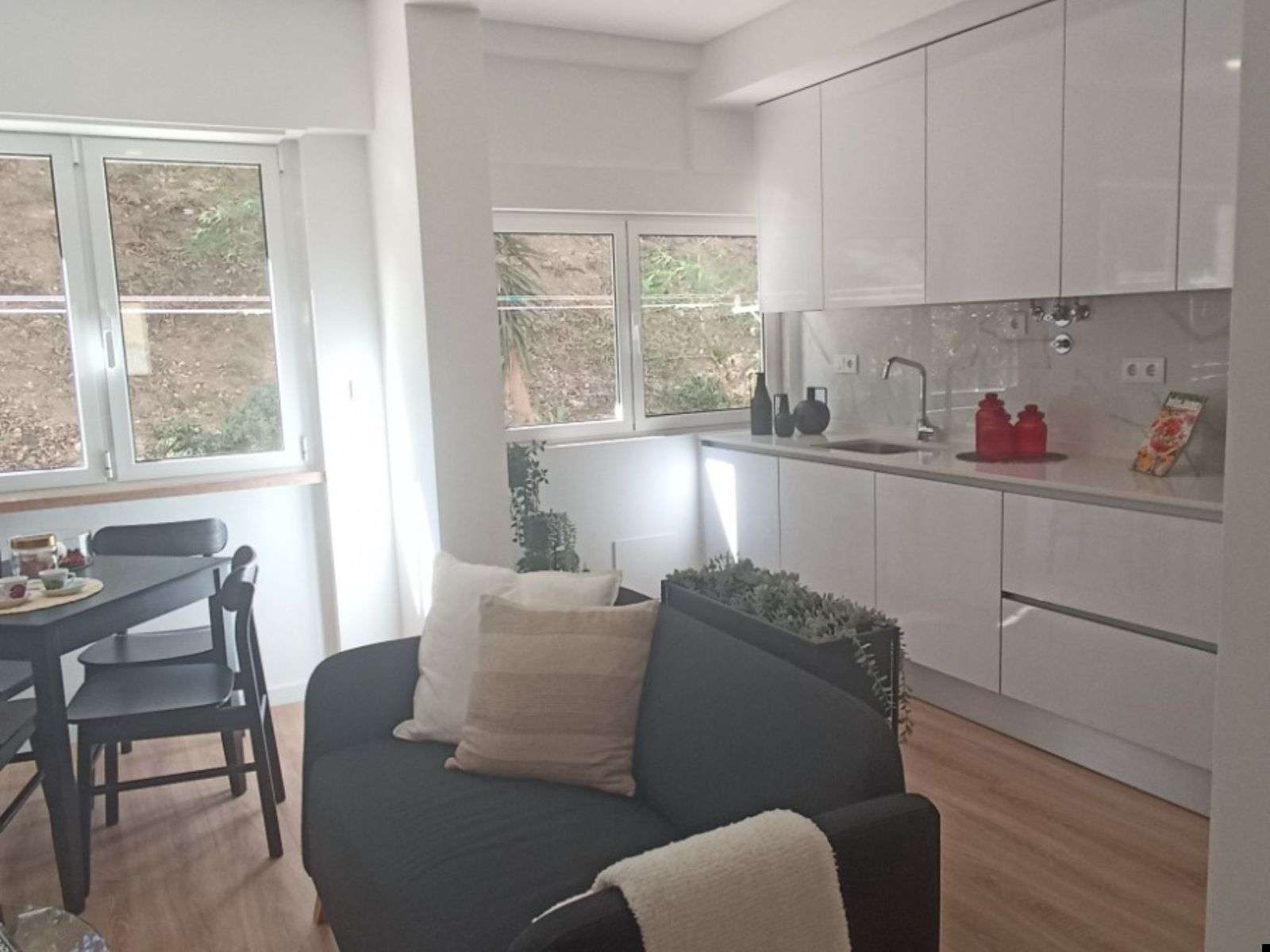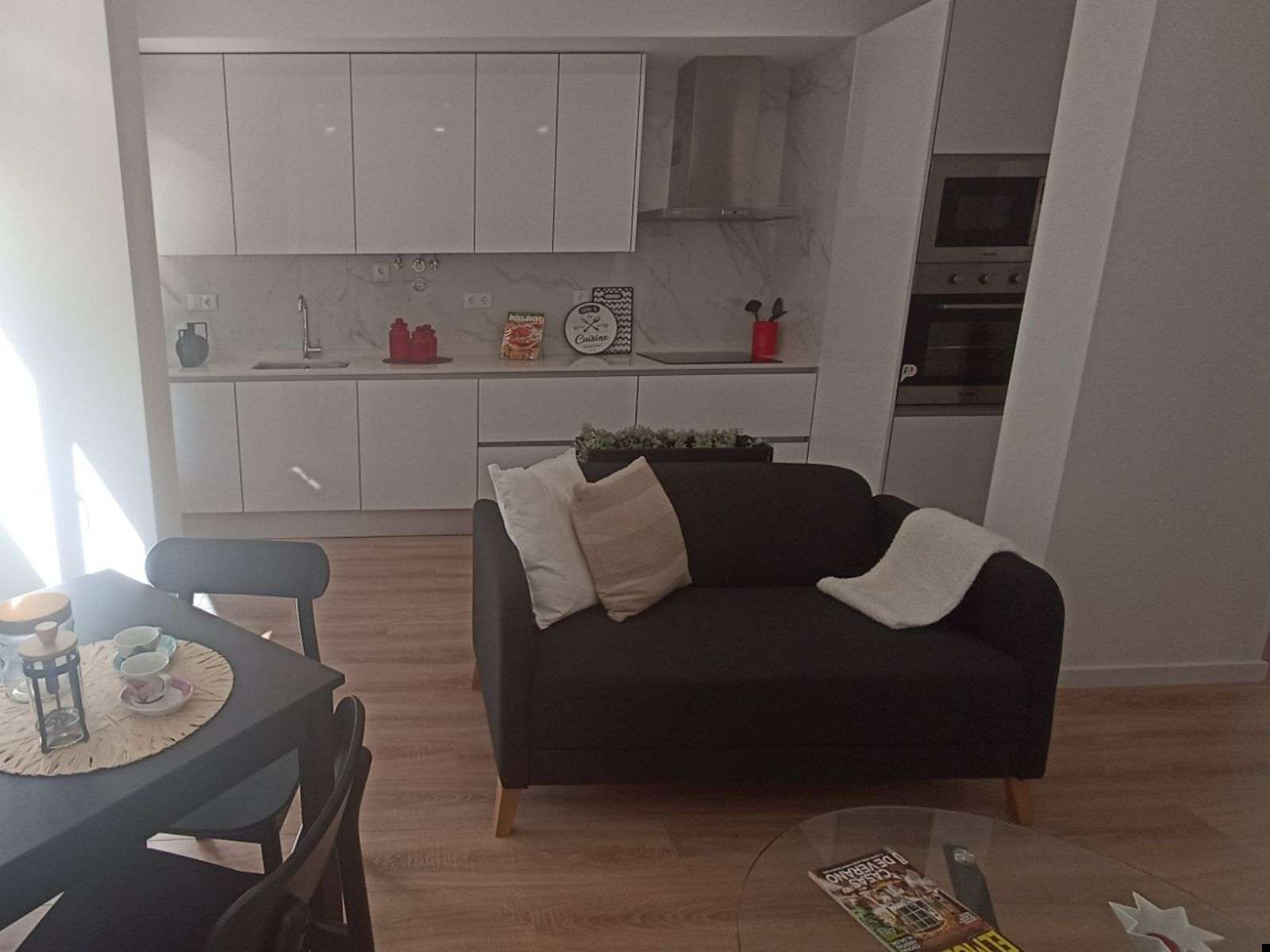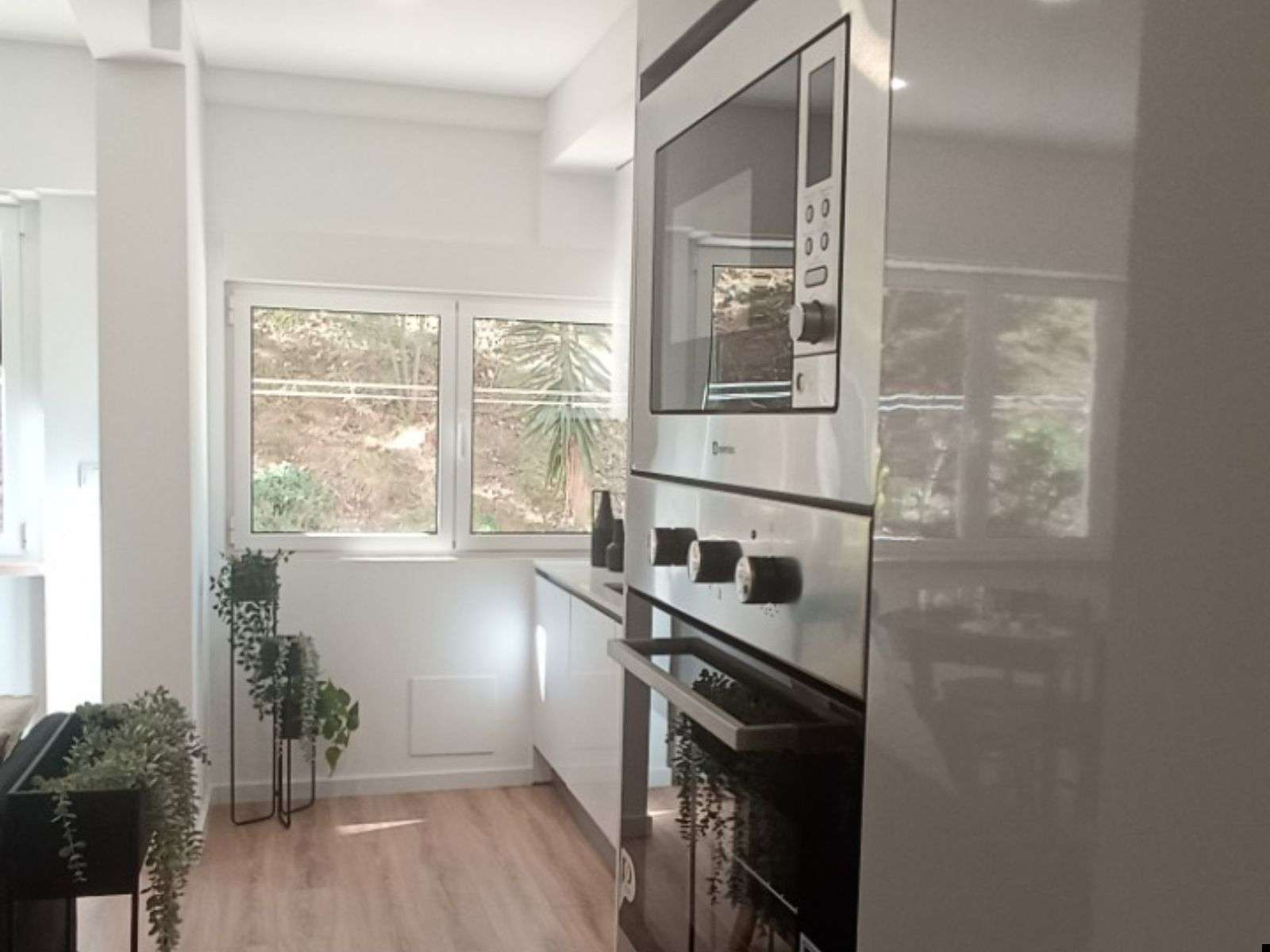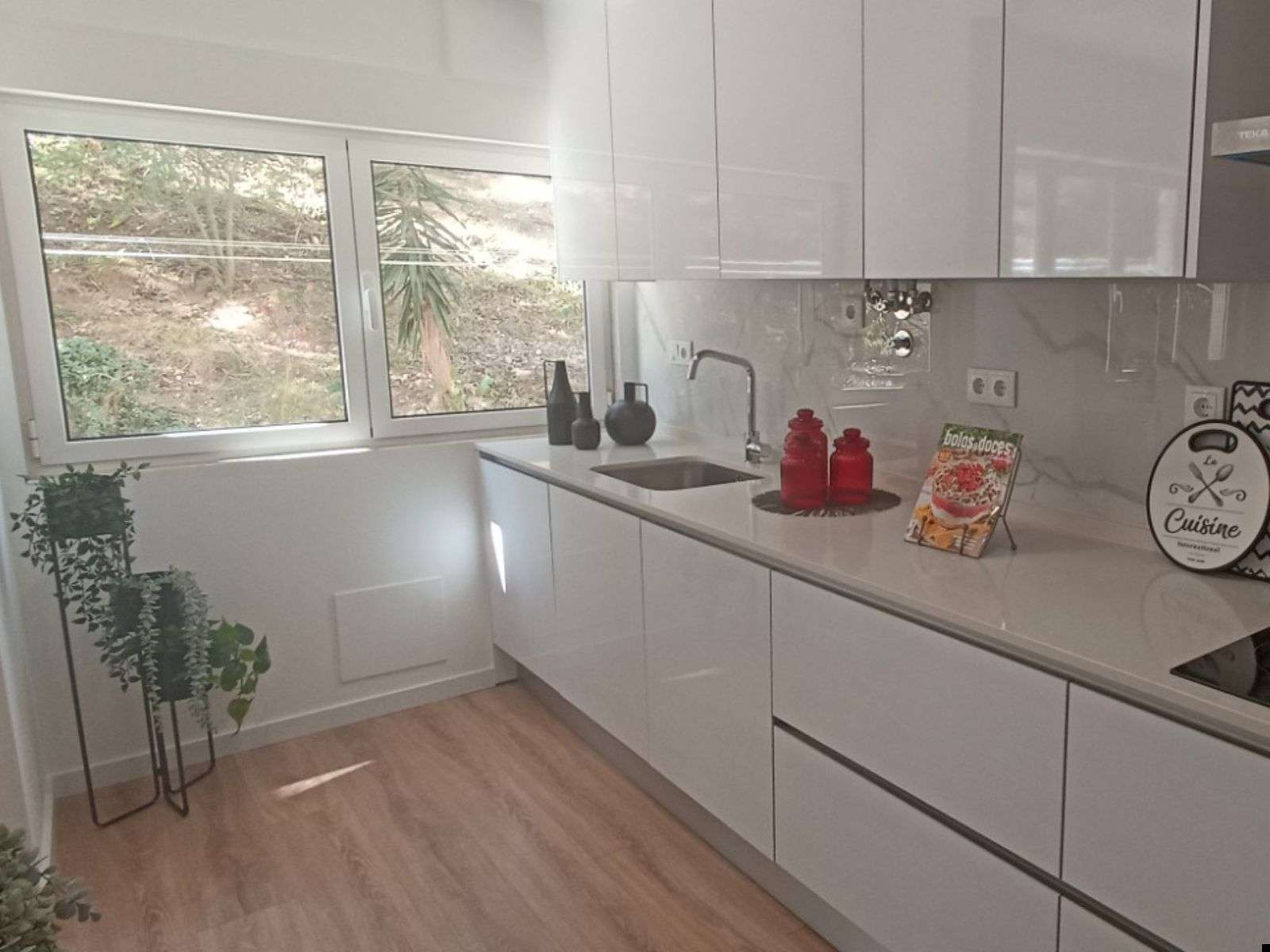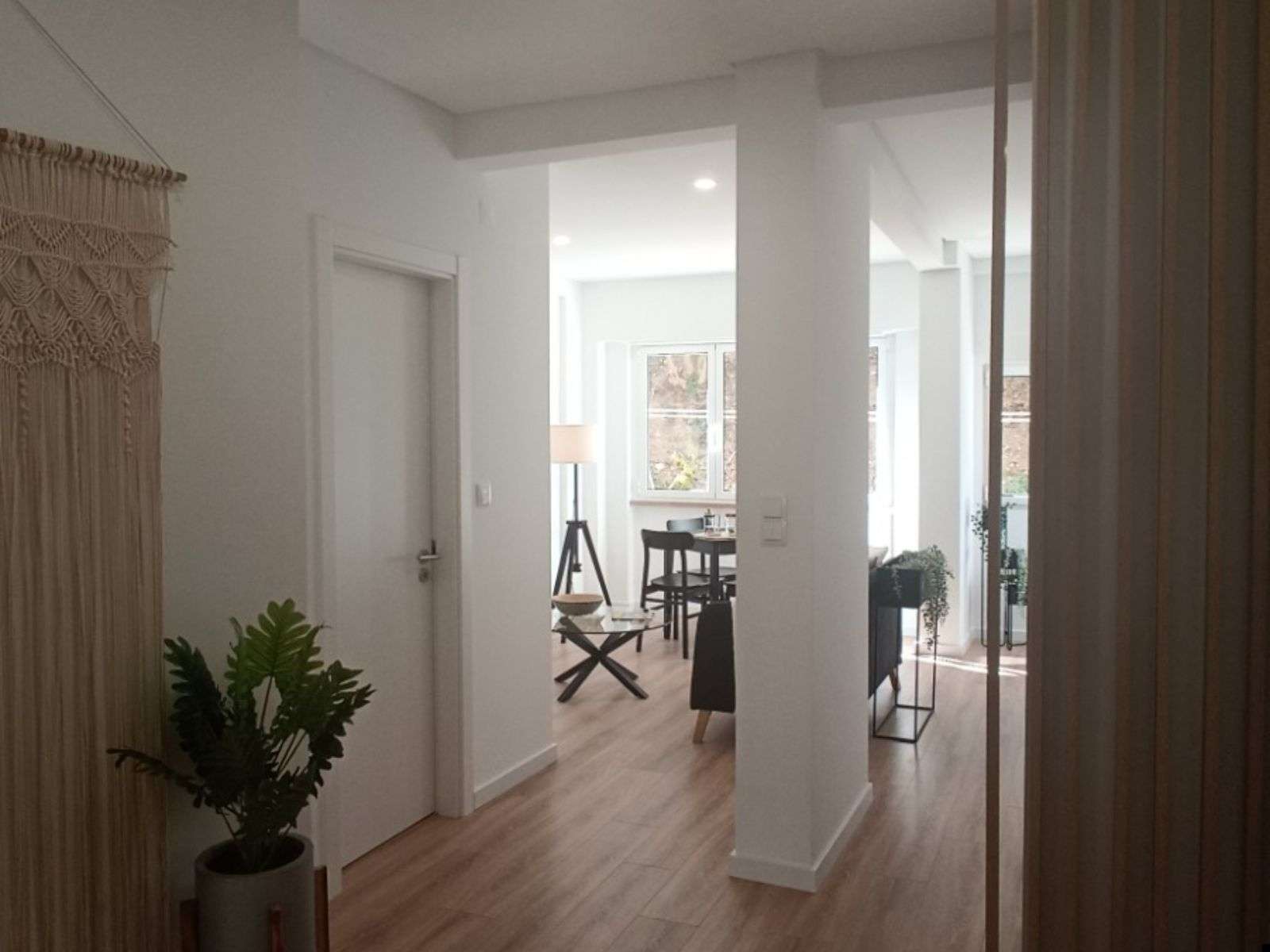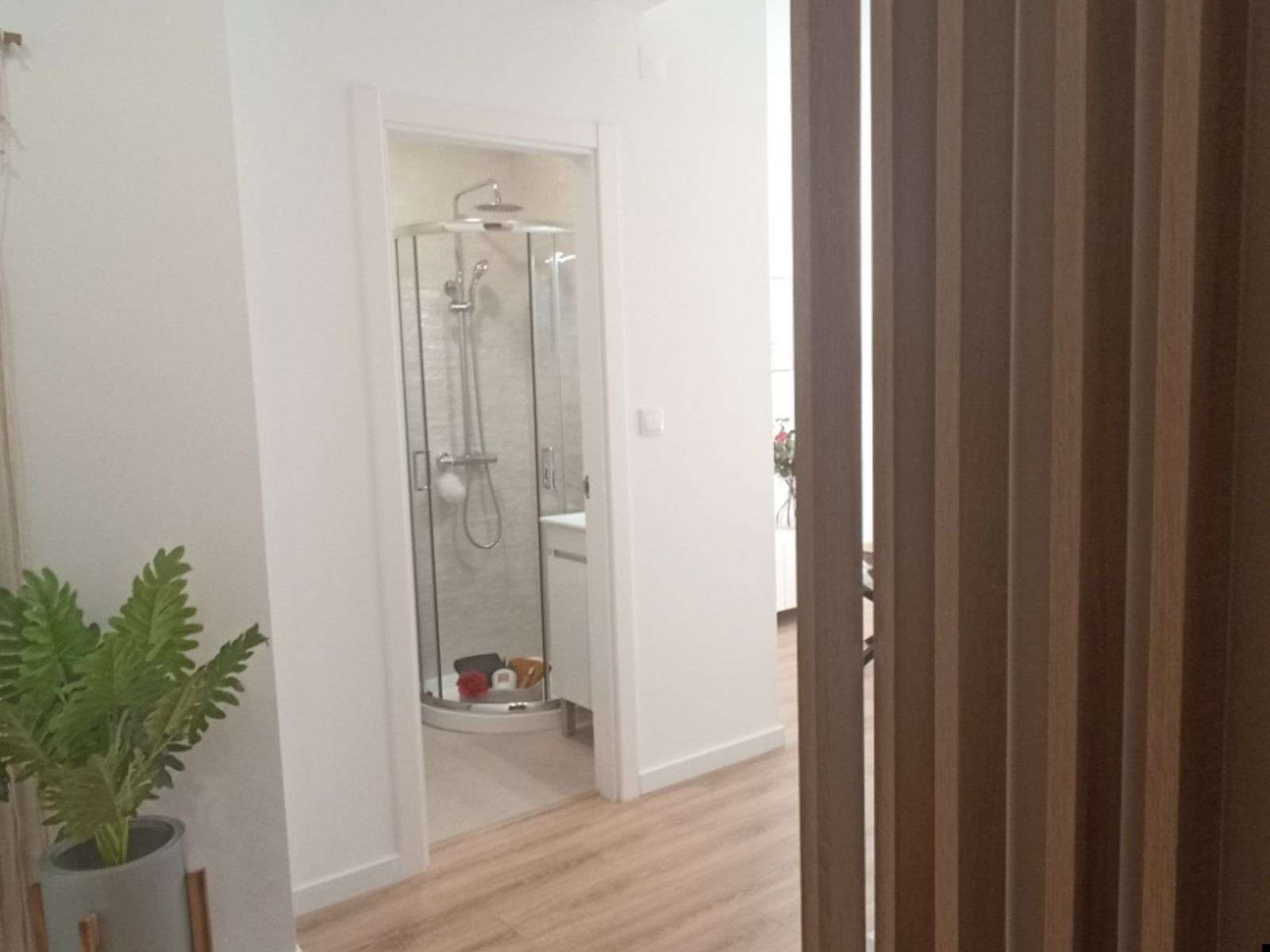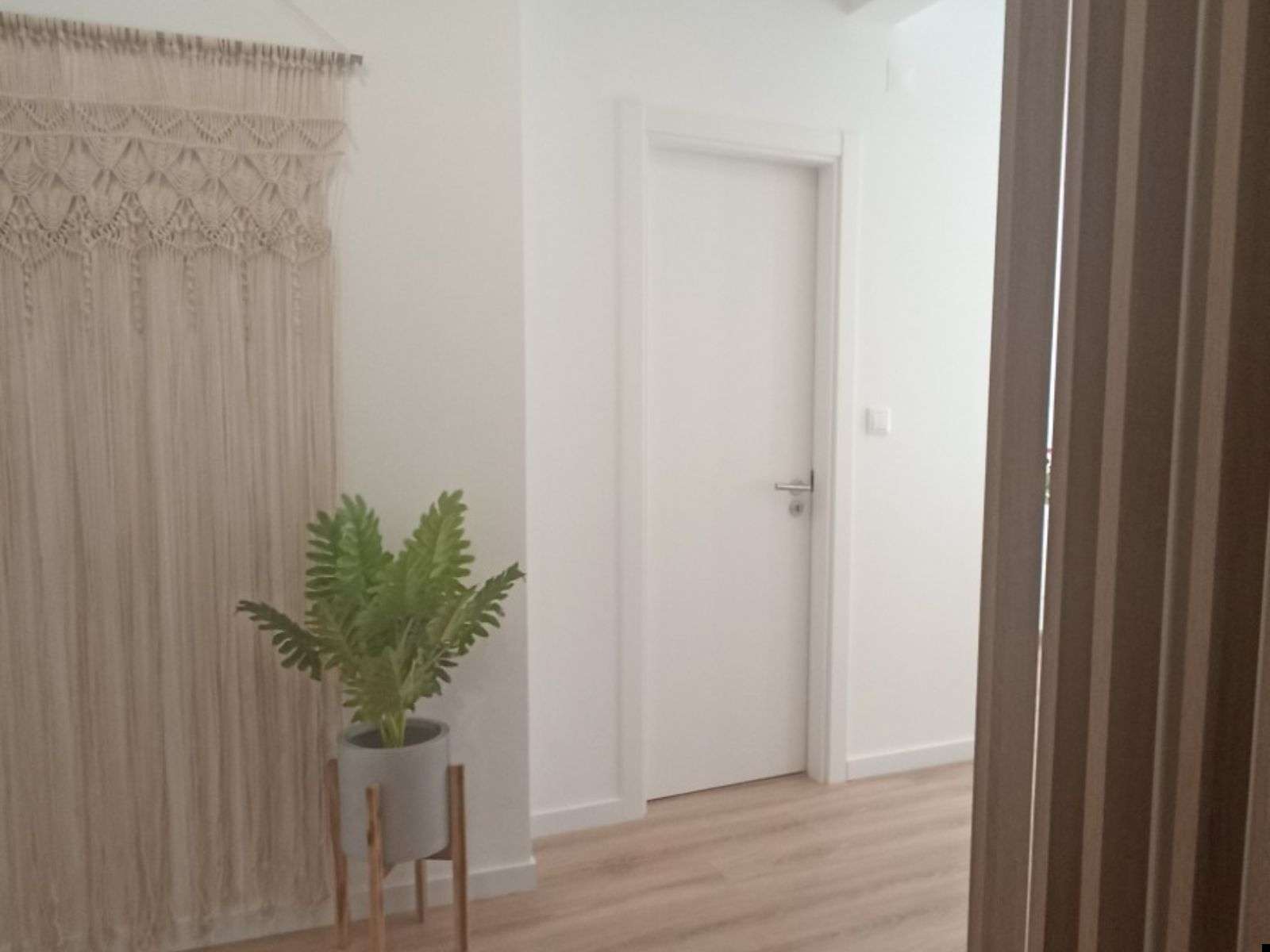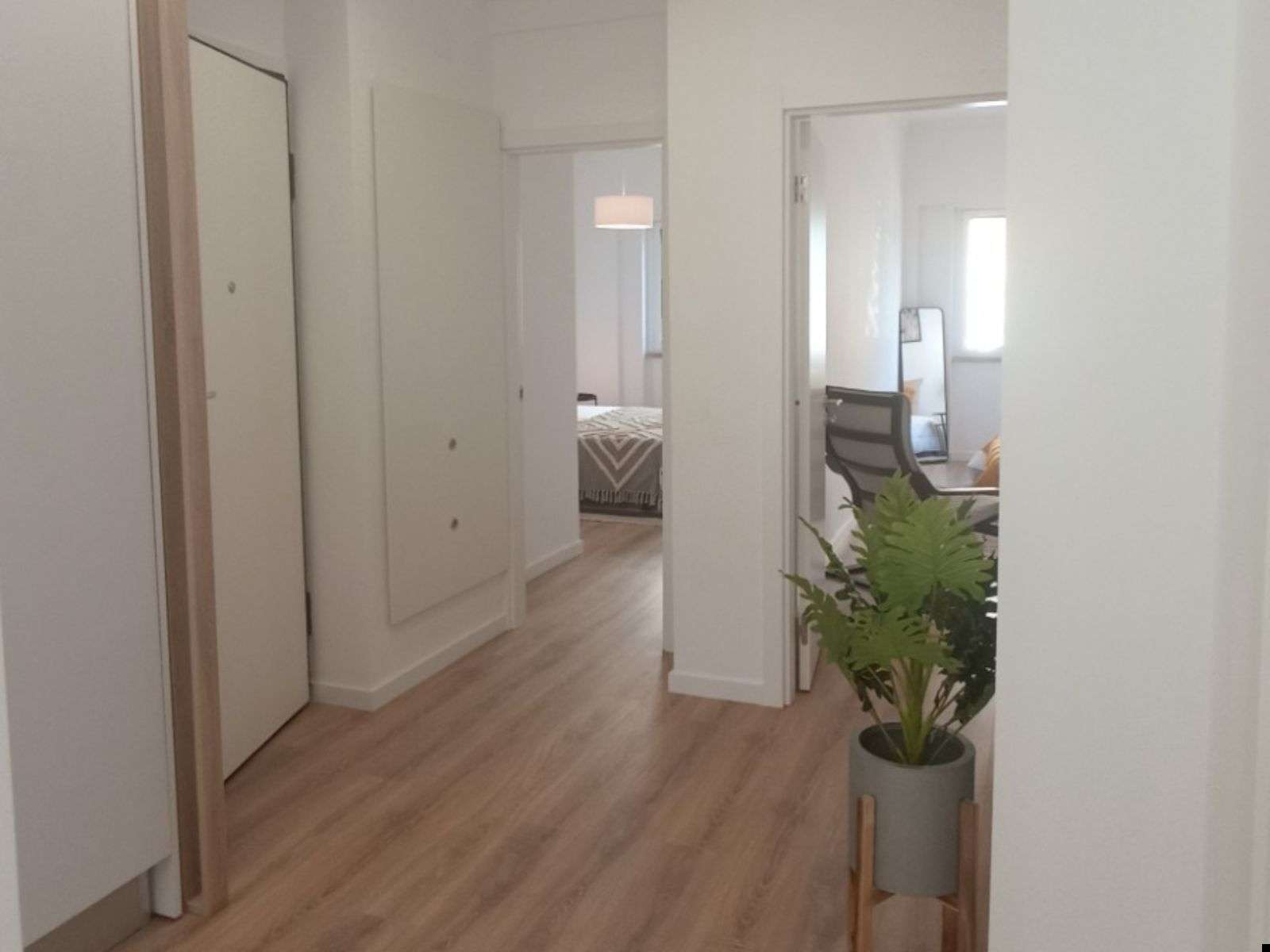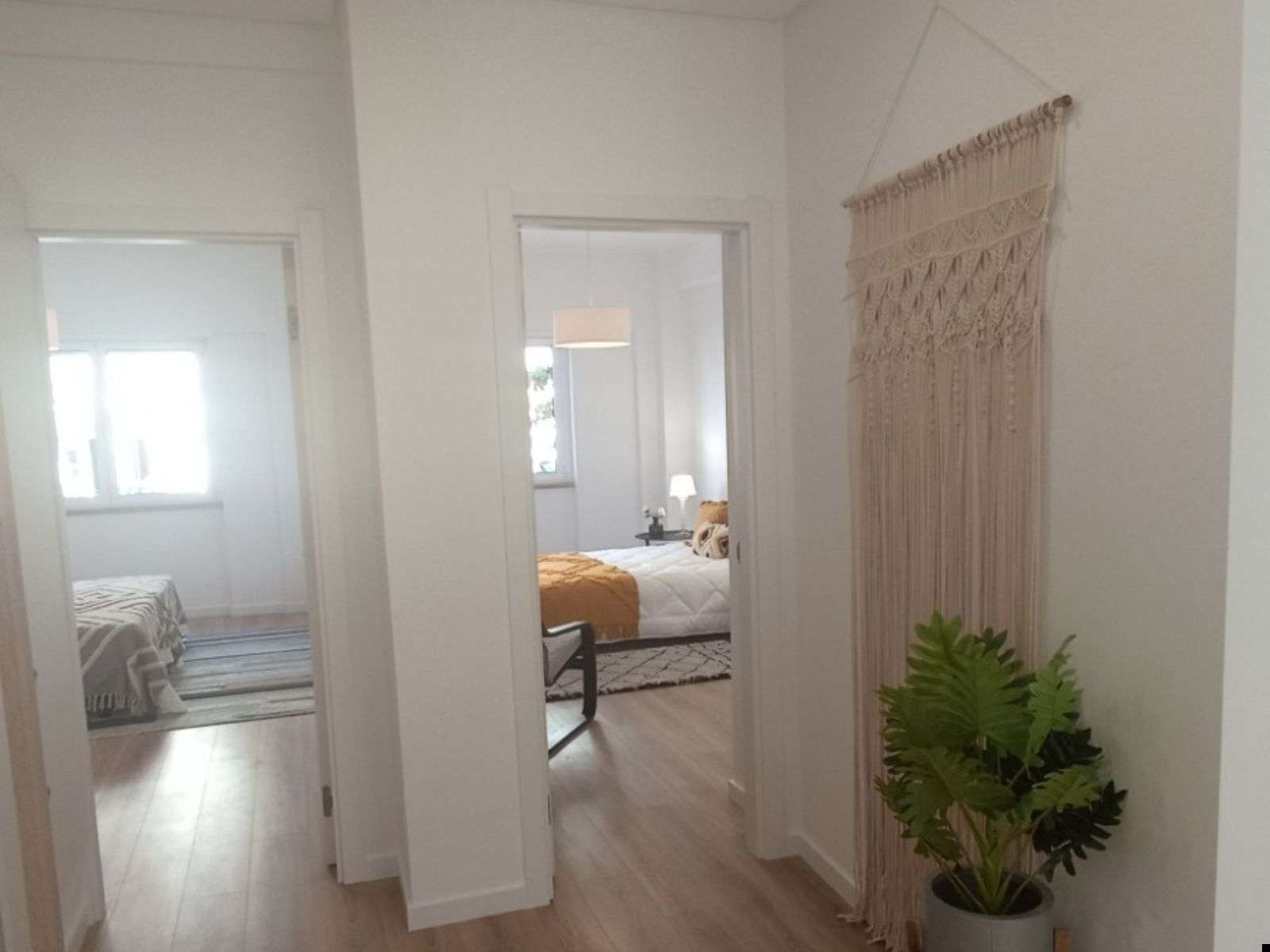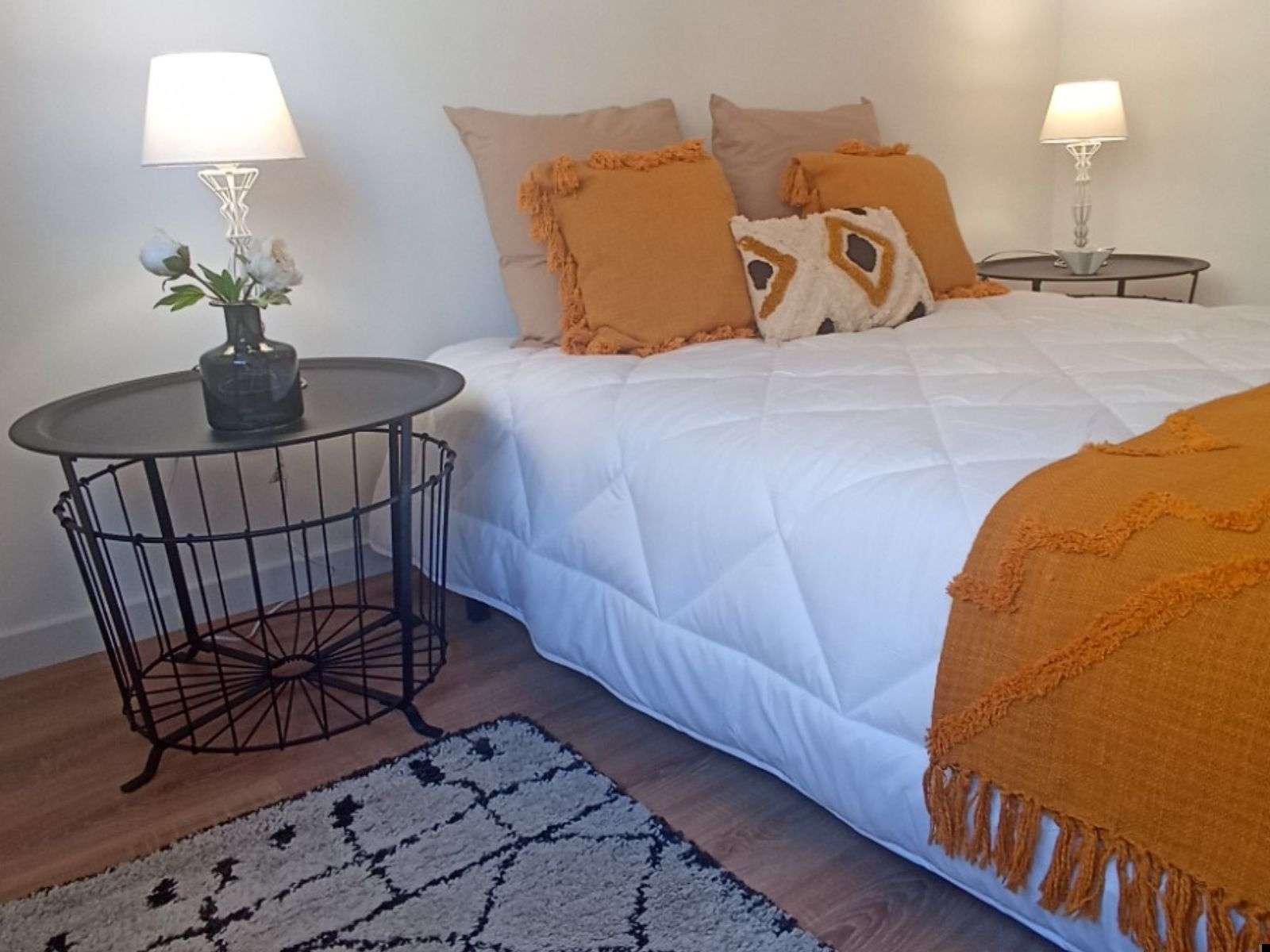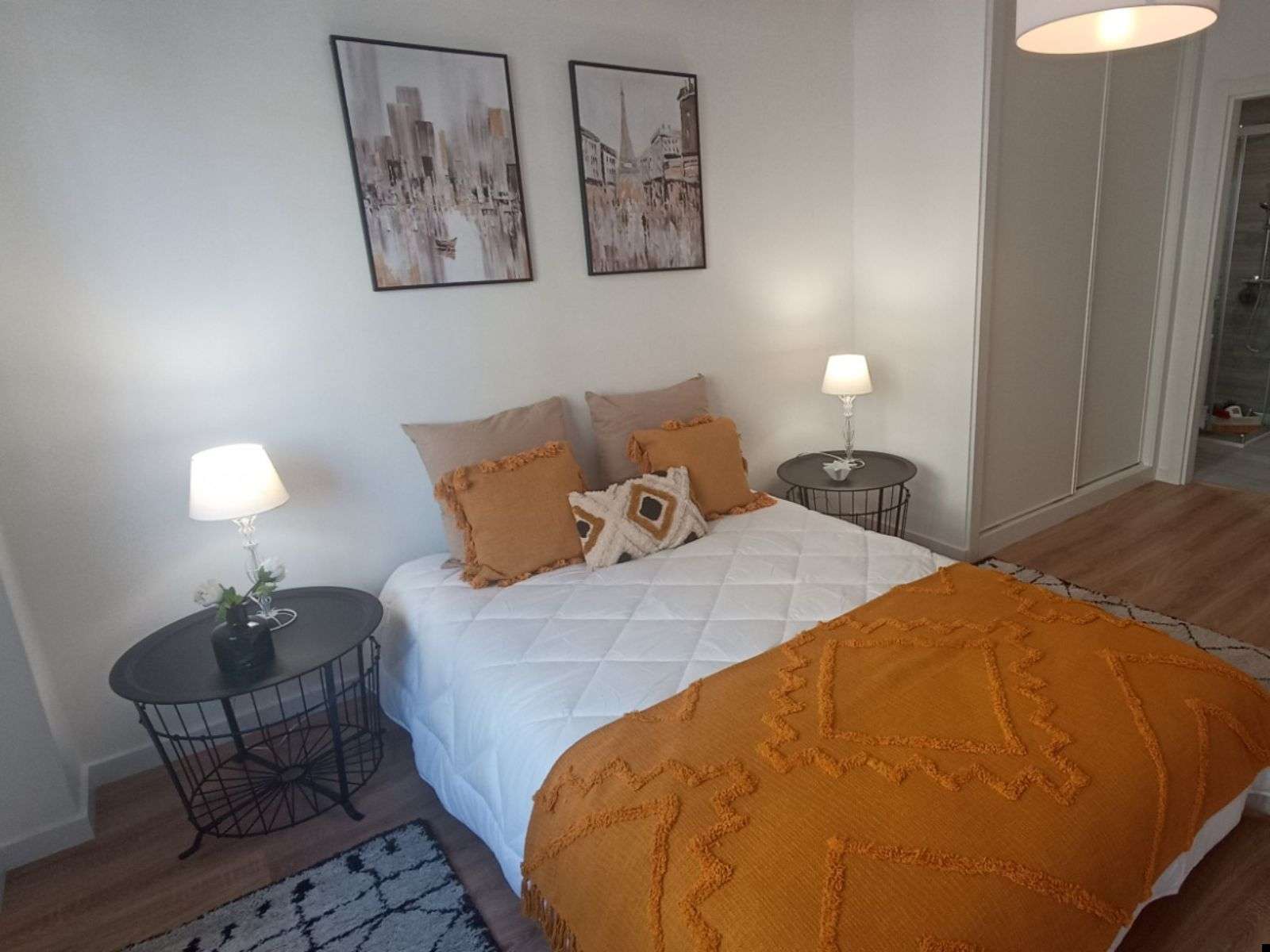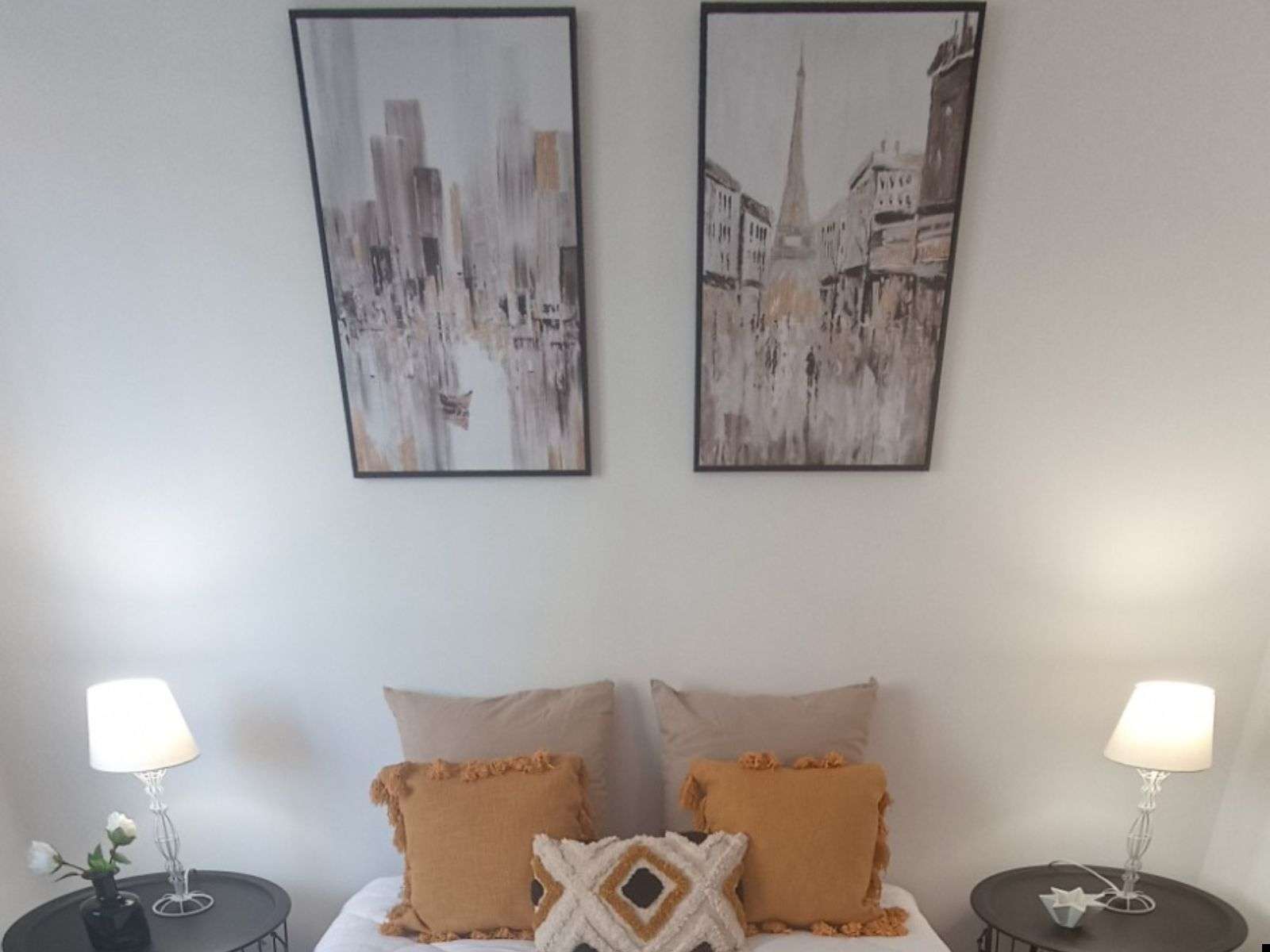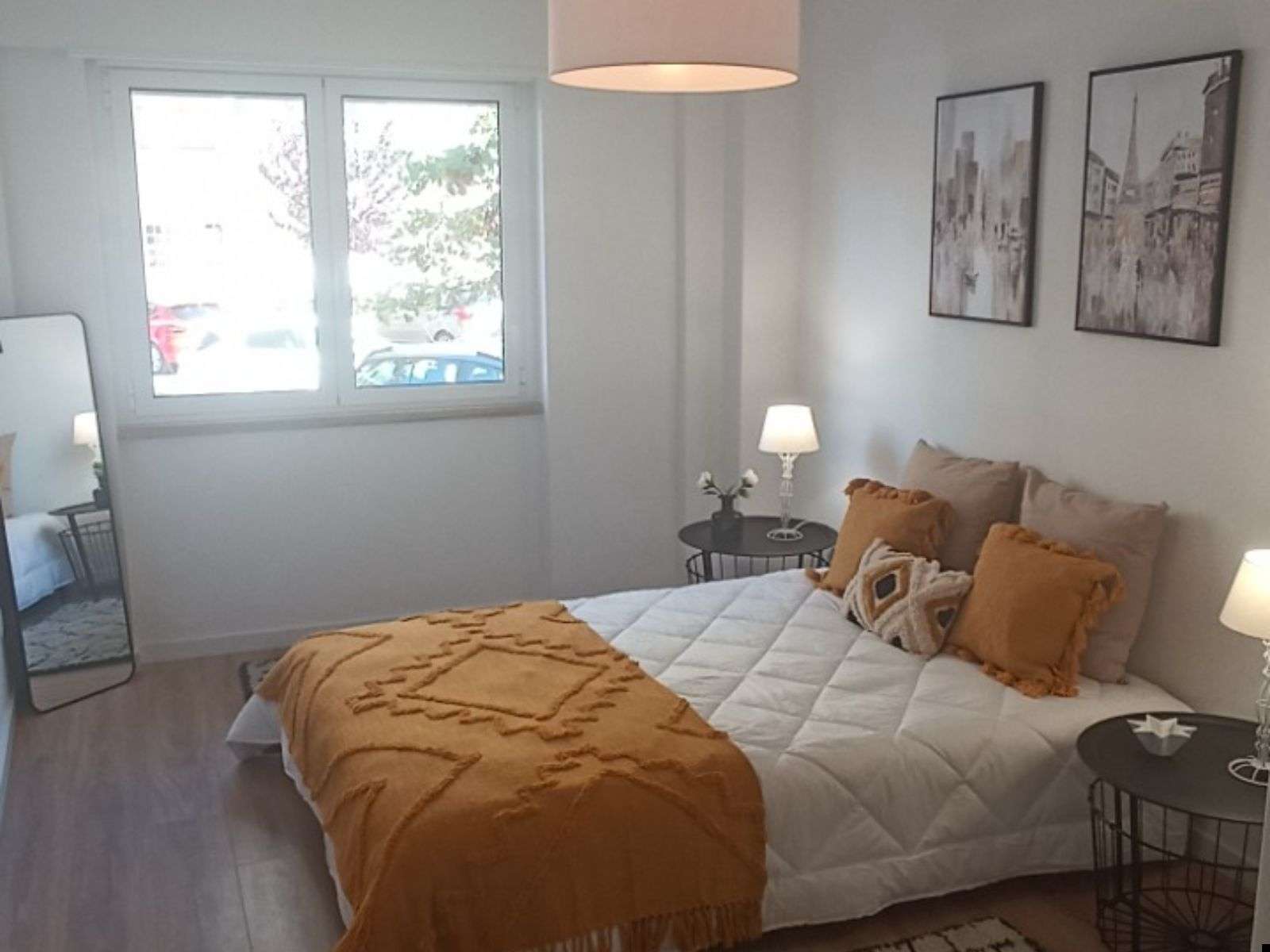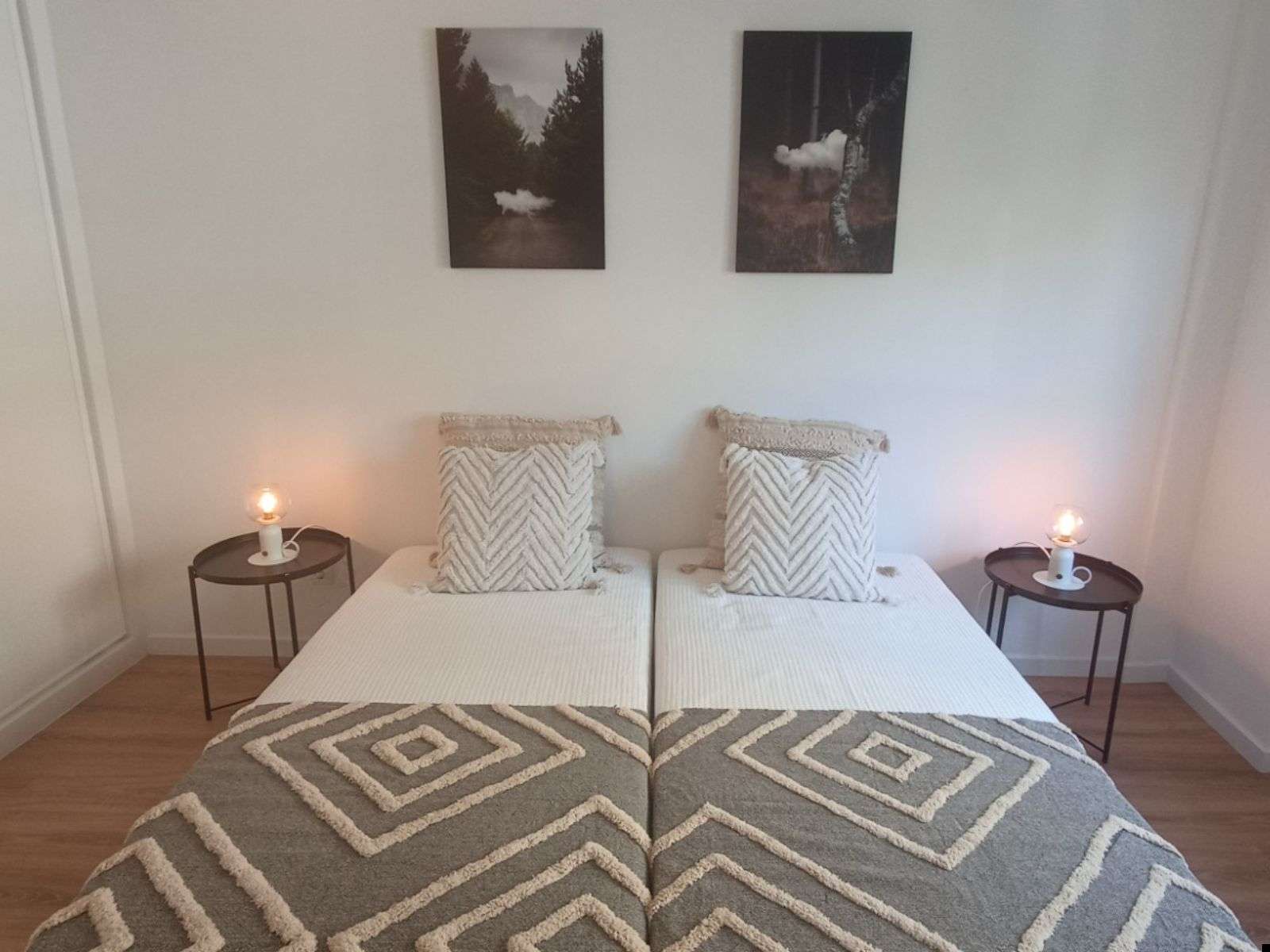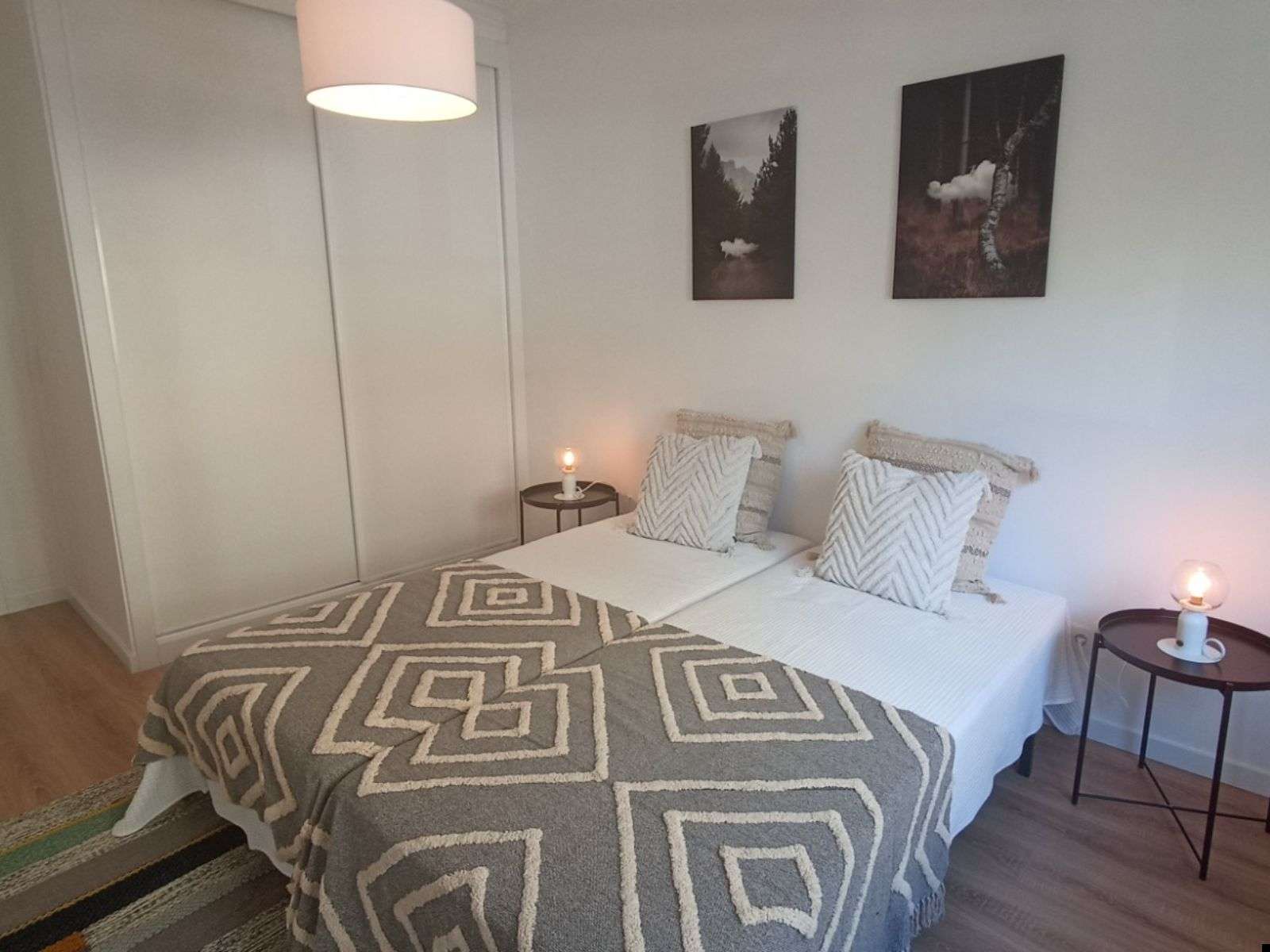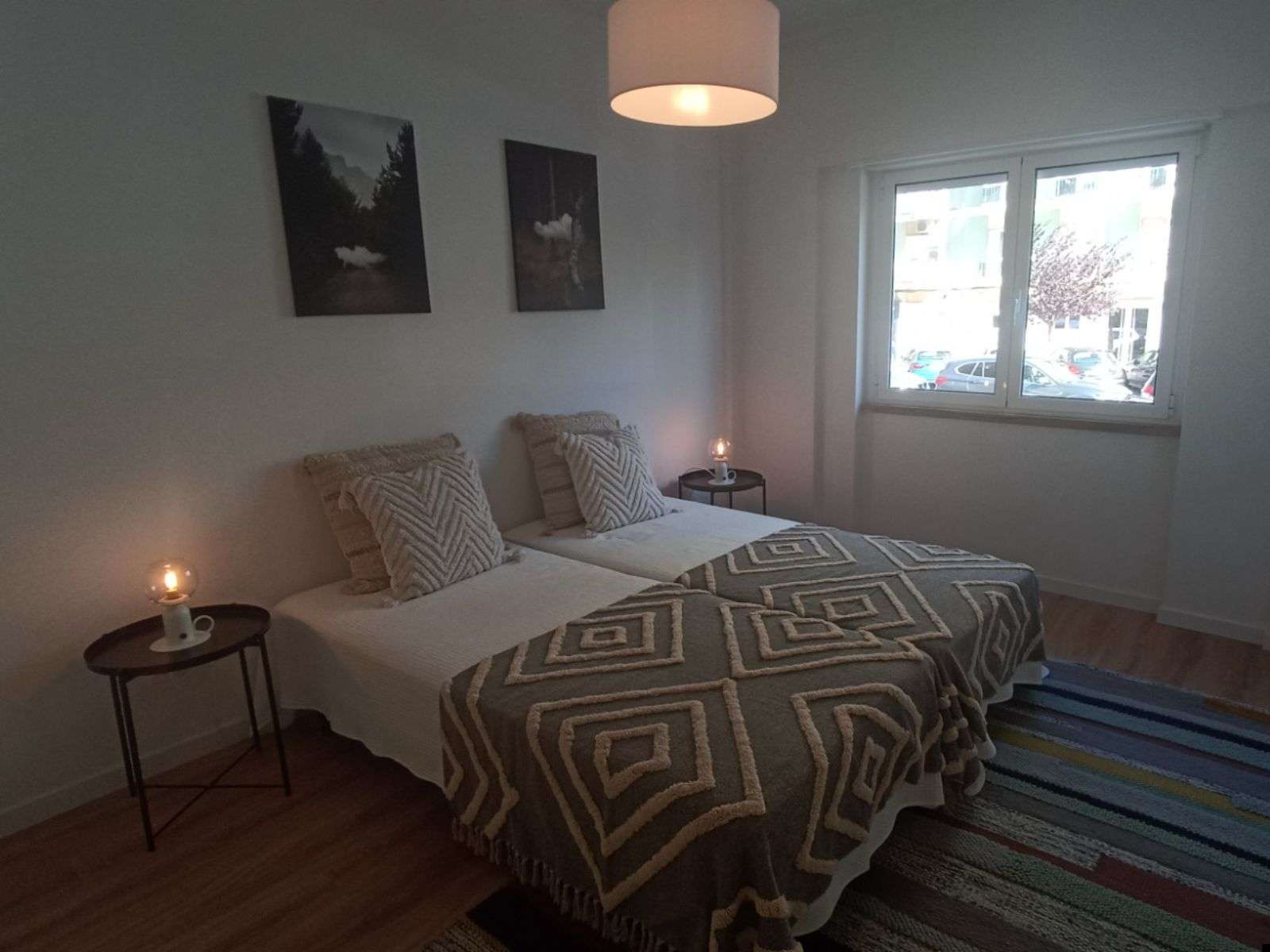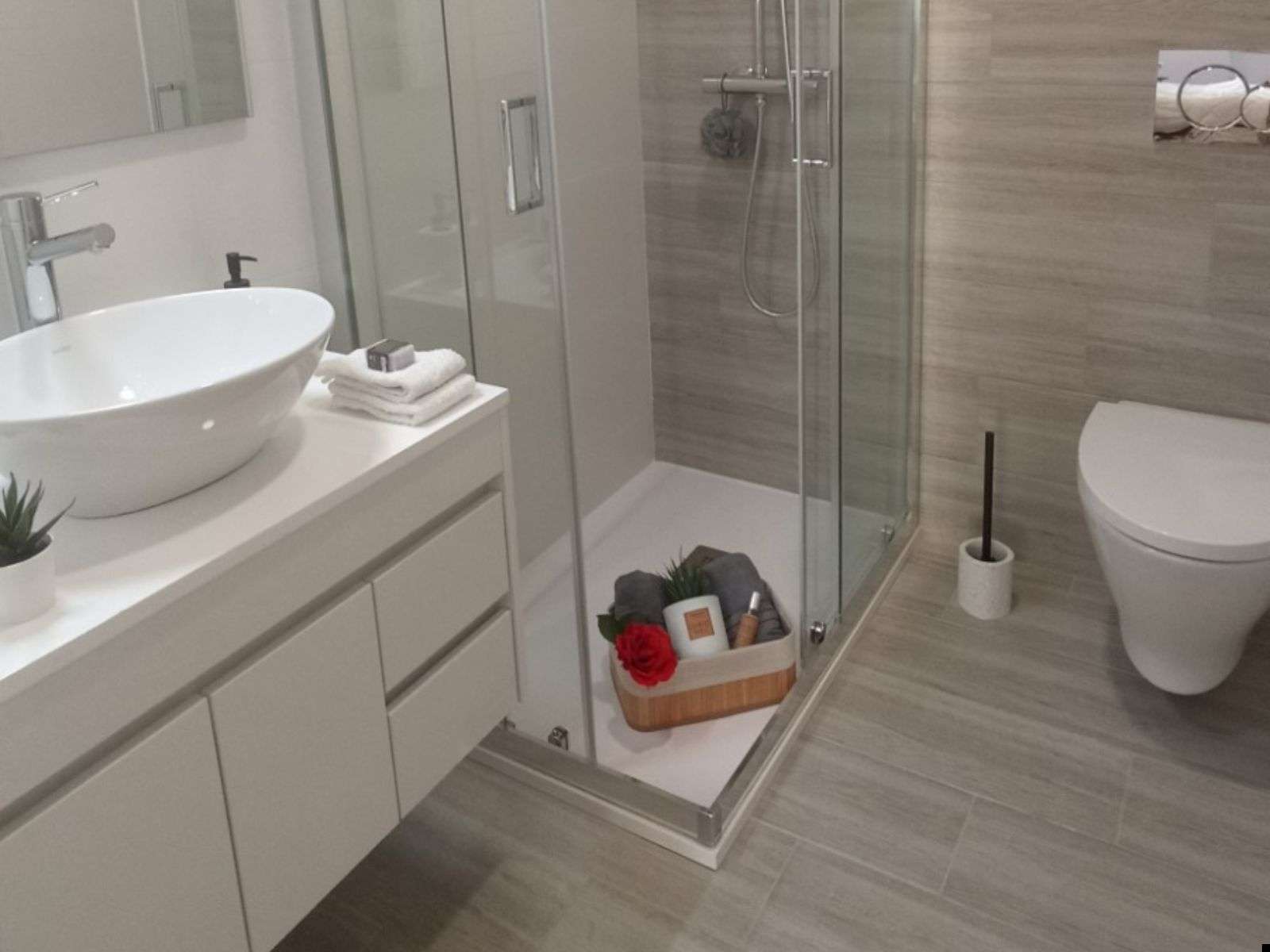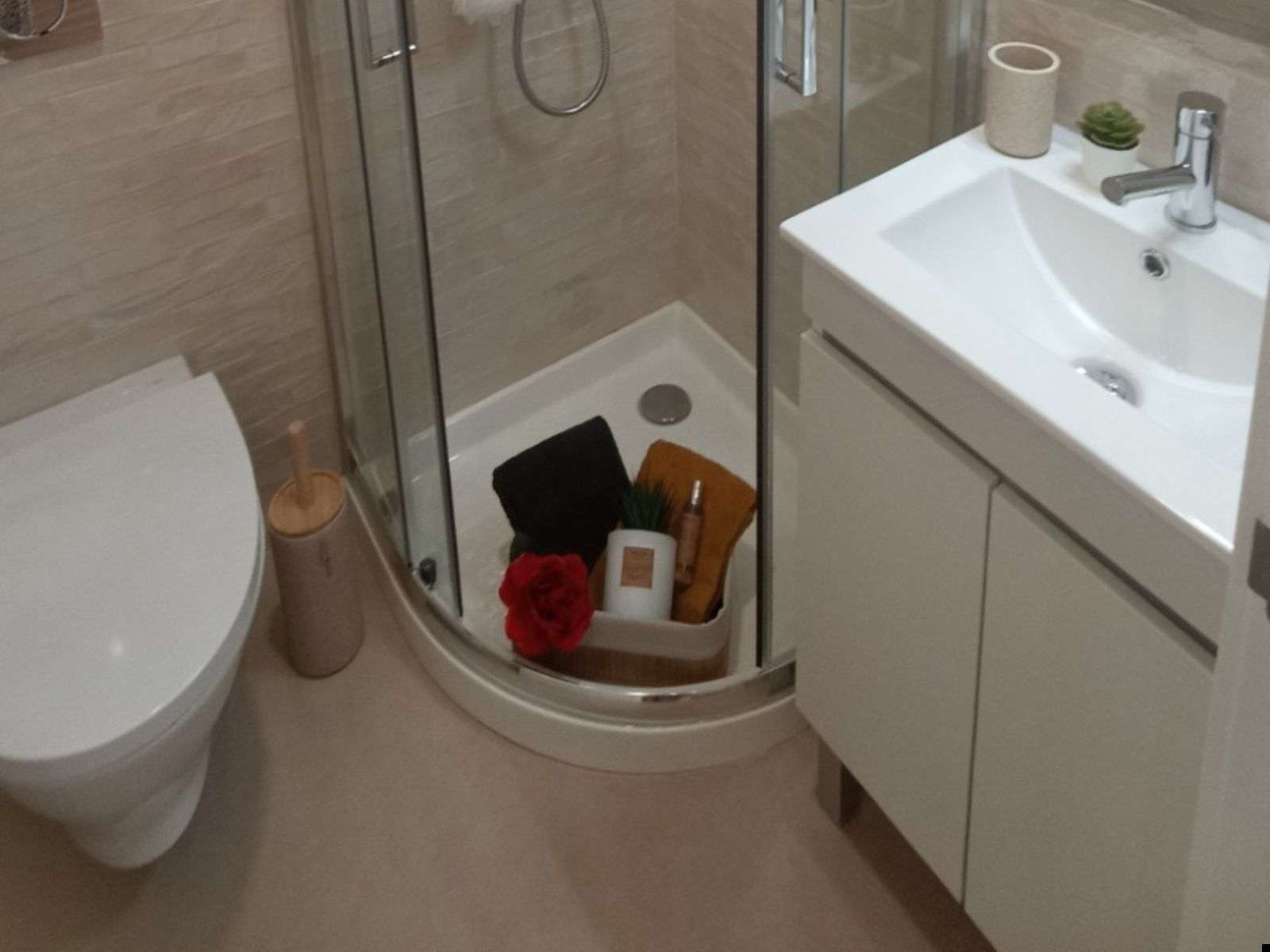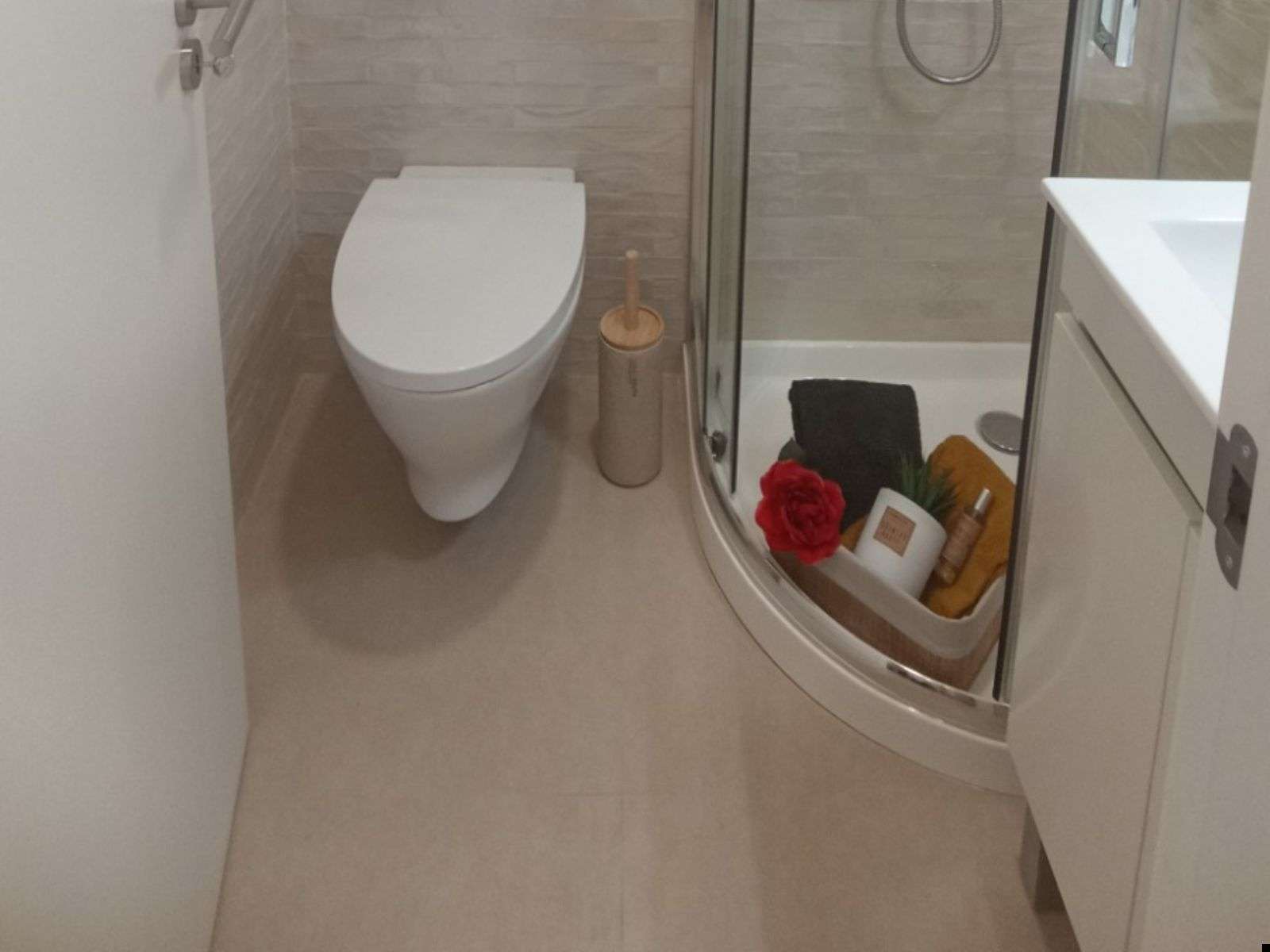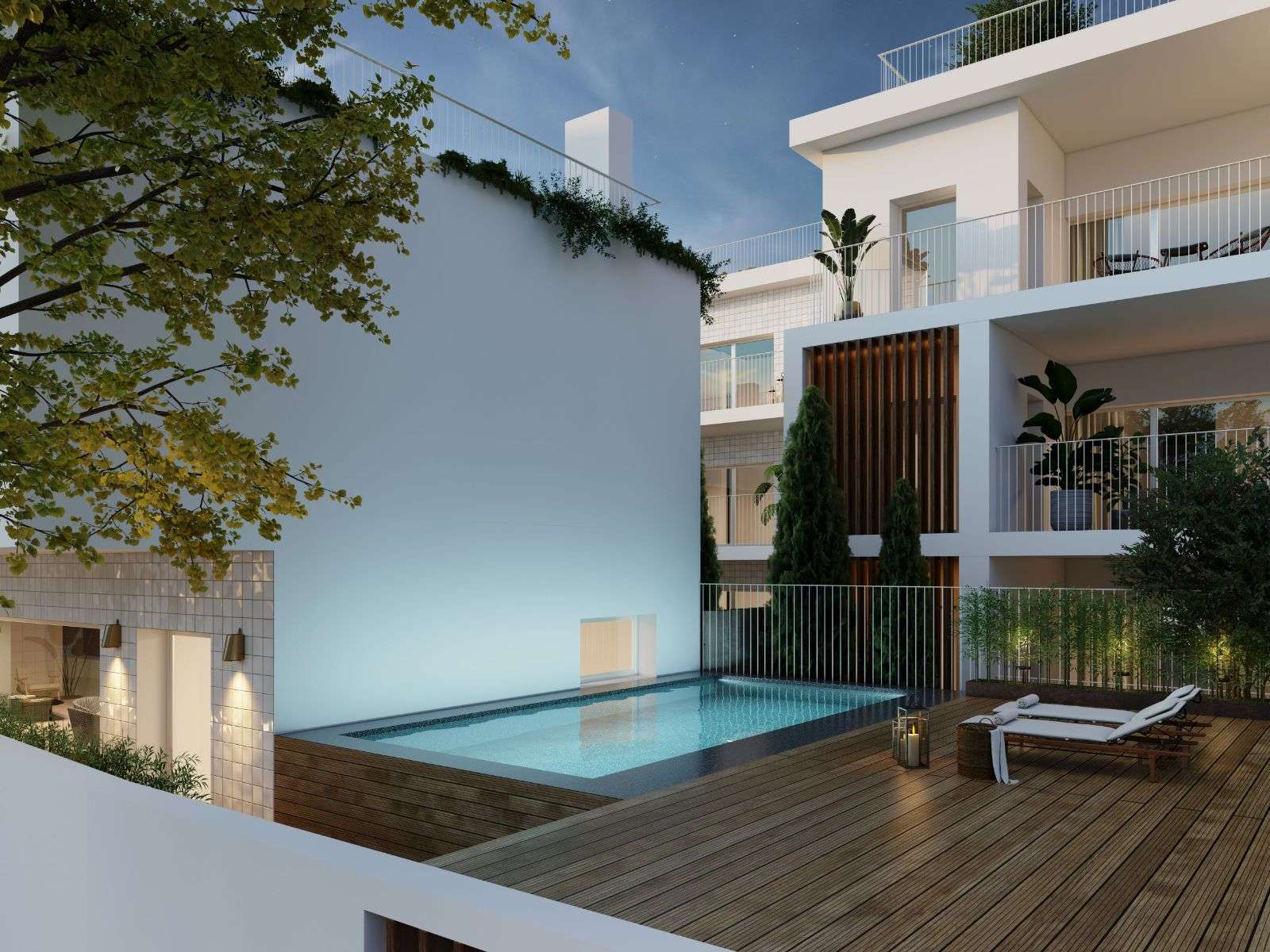Furnished and equipped renovated 3-bedroom apartment in Benfica
Photos
Video
Description
Furnished and equipped renovated 3-bedroom apartment in Benfica, in a family-friendly, residential neighbourhood with a wide range of shops and services. These include traditional shops, design and furniture stores, cafes and restaurants. Central area with easy access, close to public transport, Benfica Market, the Colégio Militar underground train station, Hospital da Luz and Estádio da Luz football stadium.
This 81 sq m property is in a building with a 2 lifts and will be sold furnished and equipped. It consists of a hall (5 sq m), an open-plan kitchen and lounge (20 sq m), a full guest bathroom (4 sq m) with wall-mounted sink and toilet, one suite (20 sq m) with a wardrobe and balcony, and two bedrooms (10 sq m and 15 sq m) with wardrobes, one of which has access to the balcony.
Previsão conclusão da obra: Agosto de 2024.
Features:
– Property sold fully furnished and equipped
– Kitchen with white units and walls fully tiled, including behind the installed kitchen units
– Fully fitted kitchen with oven, hob, cooker hood, microwave, built-in dishwasher, built-in washing machine, water heater with storage tank and built-in fridge-freezer
– Balconies
– Wardrobes
– White lacquered window frames with tilt-and-swing double-glazed windows in all rooms
– False ceiling with recessed lighting throughout the apartment
– Pre-installation of air conditioning system
– Two façades
– Reinforced armoured front door
– Two lifts
Benfica is a parish of Lisbon that is home to about two-thirds of the great lung of the Portuguese capital, the Parque Florestal de Monsanto.
Benfica began as a country village. In the 15th century, it was made a Lisbon judicial district with two private judges. Three brotherhoods also settled here at the same time: Nossa Senhora do Amparo, Santo António and São Sebastião.
When the Lisbon judicial district was abolished in 1852, Benfica became part of the new municipality of Belém, and then in 1886 it was split off. The part outside the new Lisbon ring road became part of Oeiras (and now Amadora), while the part inside joined Lisbon, giving rise to the current parish.
The city continued to grow, which is reflected in the increasing urbanisation of the parish. The population tripled from 17,843 to around 50,000 between the 1950s and the 1990s.
The territory was divided again in 1959 with the creation of the São Domingos de Benfica parish.
More recently, although there are more buildings, the resident population is shrinking because of ageing and the migration of the younger inhabitants to the periphery.
-PROP-030830
Details
- Price: €399,900
- Property Size: 81 m²
- Bedrooms: 3
- Room: 1
- Bathrooms: 2
- Garage: 0
- Property Type: Apartment
- Transaction Type: For Sale
Energy Classification
- Energy Class: C
- A+
- A
- B
- B-
-
| Classe energética CC
- D
- E
- F
- G
Similar Listings
3-bedroom apartment with 247 sqm total area, [or sale in Belém, Lisboa
Lisbon, Lisbon, BelémBedrooms: 3
Bathrooms: 5
Garage: 2
247 m²
- Apartment
- PROP-030898
3-bedroom apartment with swimming pool and parking in Junqueira
Lisbon, Lisbon, AlcântaraBedrooms: 3
Bathrooms: 4
Garage: 2
246 m²
- Apartment
- PROP-027846
3 bedroom apartment with balcony and parking in Avenidas Novas
Lisbon, Lisbon, Avenidas NovasBedrooms: 3
Bathrooms: 3
Garage: 1
133 m²
- Apartment
- PROP-027749
4-bedroom apartment near Amoreiras with views over the city
Lisbon, Lisbon, CampolideBedrooms: 4
Bathrooms: 4
Garage: 2
196 m²
- Apartment
- PROP-030721

